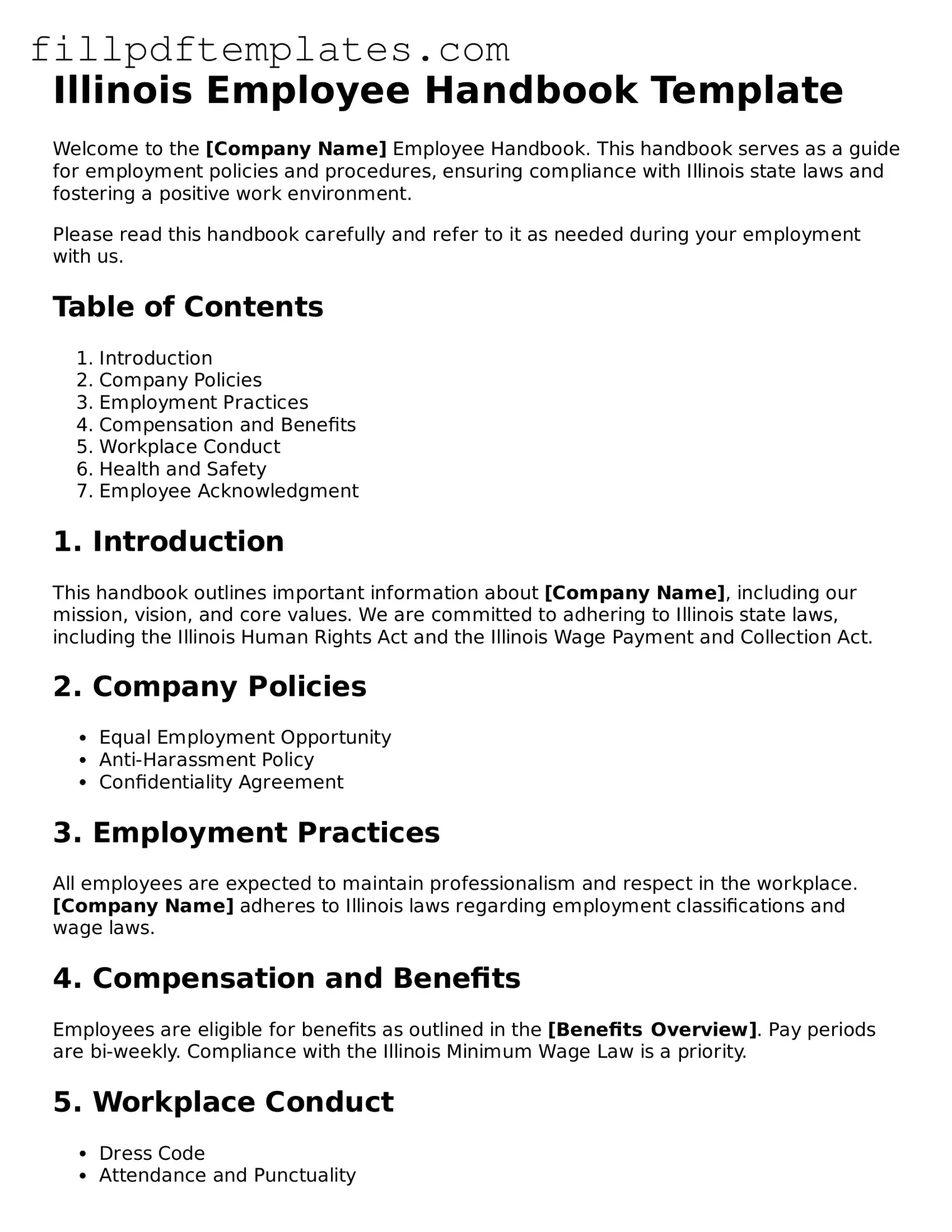Illinois Employee Handbook Template
Welcome to the [Company Name] Employee Handbook. This handbook serves as a guide for employment policies and procedures, ensuring compliance with Illinois state laws and fostering a positive work environment.
Please read this handbook carefully and refer to it as needed during your employment with us.
Table of Contents
- Introduction
- Company Policies
- Employment Practices
- Compensation and Benefits
- Workplace Conduct
- Health and Safety
- Employee Acknowledgment
1. Introduction
This handbook outlines important information about [Company Name], including our mission, vision, and core values. We are committed to adhering to Illinois state laws, including the Illinois Human Rights Act and the Illinois Wage Payment and Collection Act.
2. Company Policies
- Equal Employment Opportunity
- Anti-Harassment Policy
- Confidentiality Agreement
3. Employment Practices
All employees are expected to maintain professionalism and respect in the workplace. [Company Name] adheres to Illinois laws regarding employment classifications and wage laws.
4. Compensation and Benefits
Employees are eligible for benefits as outlined in the [Benefits Overview]. Pay periods are bi-weekly. Compliance with the Illinois Minimum Wage Law is a priority.
5. Workplace Conduct
- Dress Code
- Attendance and Punctuality
- Use of Company Property
6. Health and Safety
The safety and well-being of our employees is paramount. [Company Name] maintains a workplace environment that adheres to the Illinois Occupational Safety and Health Act. Report any safety concerns to [Designated Safety Officer].
7. Employee Acknowledgment
I have received, read, and understood the Illinois Employee Handbook for [Company Name].
Employee Name: ________________
Employee Signature: ________________
Date: ________________
